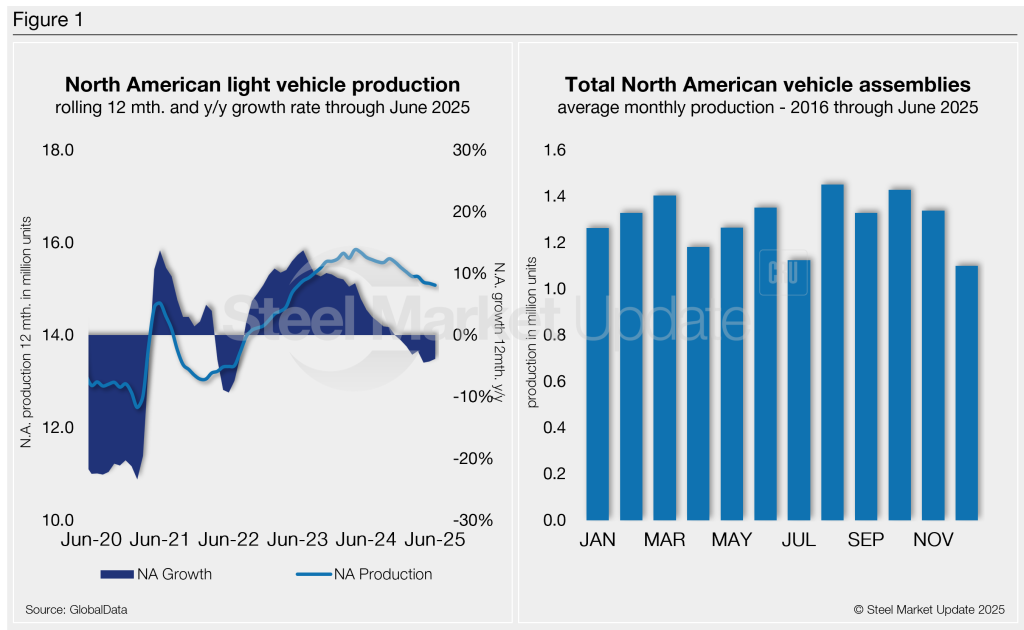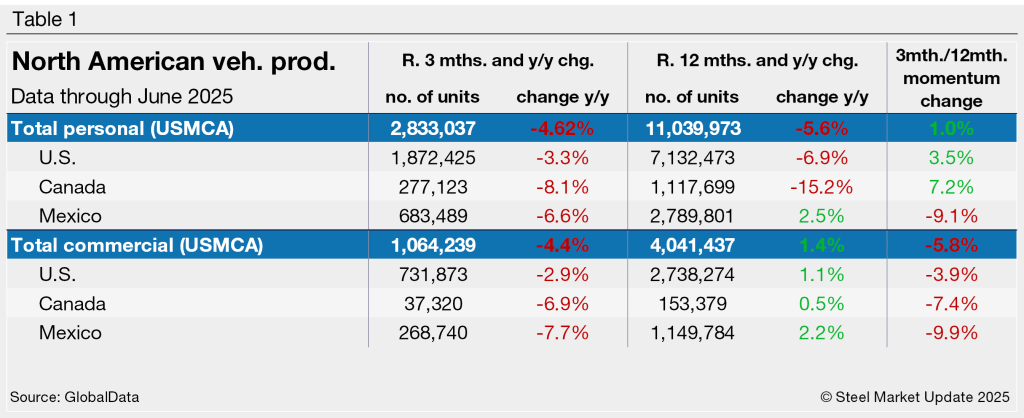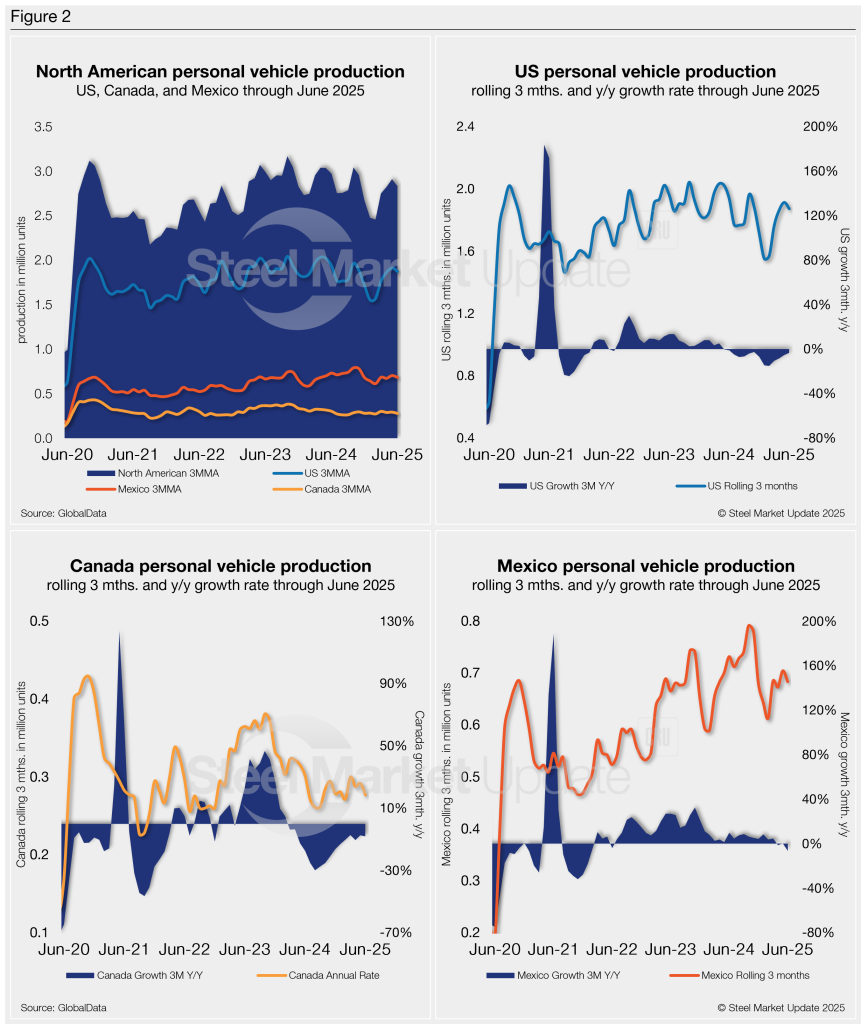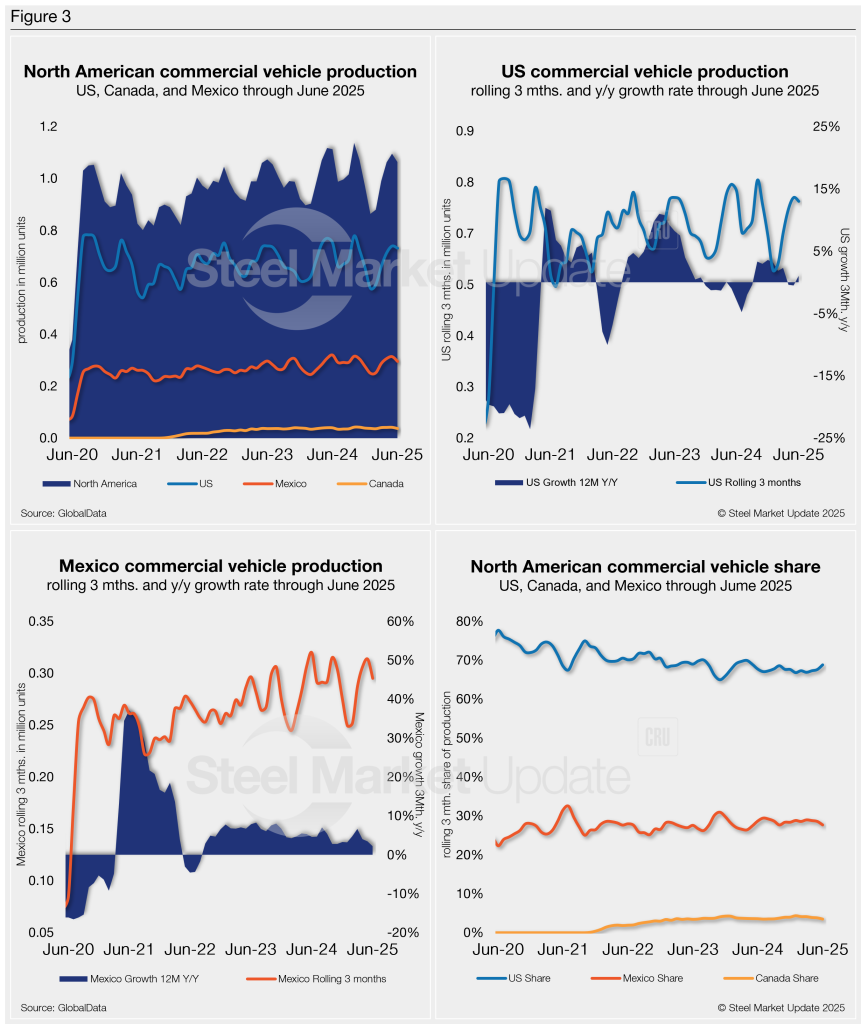Manufacturers/End Users
July 30, 2025
North American auto assemblies down in June
Written by David Schollaert
North American auto assemblies declined in June, down 10.6% vs. May. And, according to GlobalData, assemblies were off 3.1% year on year (y/y).
After a hard drop in December — the worst since July 2021 — assembly numbers rallied in Q1 but have been inconsistent throughout the second quarter. Sentiment remains tempered, though.
Recall that the Trump administration first imposed a 25% tariff on all imported light vehicles in April. By May, the same 25% duty applied to auto parts.
Spring buying surged as a result. It front-loaded consumer demand. That momentum has now tapered, cooling demand. Those same tariffs are straining North American auto production — driving up costs and disrupting cross-border supply chains.
North American vehicle production, including personal and commercial vehicles, totaled 1.233 million units in June, down nearly 11% from May’s 1.379 million units and 3.1% behind the 1.273 million units produced a year earlier.
Figure 1 below provides a five-year snapshot of North American light-vehicle production since 2020 on a rolling 12-month basis with a y/y growth rate. Also included is a five-year snapshot of average monthly production, which includes seasonality since 2016.

A short-term snapshot of assembly by nation and vehicle type is shown in the table below. It breaks down total North American personal and commercial vehicle production into US, Canadian, and Mexican components. It also includes the three- and 12-month growth rates for each and their momentum change.

For the three months and 12 months through June, the growth rate for total personal production in the USMCA region is still lagging at a noticeable rate. Commercial production has seen some growth, though only marginal. The momentum shift remains in place since commercial assembly vehicle segments saw an appreciable gain from Q4’24.
Personal vehicle production
The longer-term picture of personal vehicle production across North America is shown below. The charts in Figure 2 show the total personal vehicle production for North America and the total for the US, Canada, and Mexico.
In terms of personal vehicle production, this segment saw a 10.5% month-over-month (m/m) decline in June. Assemblies last month totaled 894,077 units, down from 999,262 units in May. And still 3.9% below a year earlier.
The US saw a 7.8% m/m production drop, with 50,414 fewer units in June. Mexico fell notably and produced 48,248 fewer units (-19%), while Canada’s production was down 6,523 units (-6.8%).
Production share across North America was little changed. The US’ personal vehicle production share of the North American market was 66.1%, followed by Mexico and Canada at 24.1% and 9.8%, respectively.

Commercial vehicle production
Total commercial vehicle production in North America and the total for each nation within the region are shown in the first chart in Figure 3 on a rolling three-month basis. Commercial vehicle production in the US and Mexico, as well as their y/y growth rates and the production share for each nation in North America, are also shown.
North American commercial vehicle production was also down in June. The region saw a 10.7% m/m decline, with a total of 339,390 units, down from 379,879 in May. June’s output was also just 0.8% behind last year.
The US saw a 6.7% m/m dip, with 17,339 fewer commercial vehicles assembled in June. Mexico saw a 17.9% cut (-19,479 units), while Canada was down 27.3% (-3,671 units).
The market share across the region was also largely unchanged in June. The US total share was 68.8%, followed by Mexico with 27.7% and Canada with 3.5%.
Mexico exports roughly 85% of its light-vehicle production, with the US and Canada as the highest-volume destinations.

Editor’s note
This report is based on data from GlobalData for automotive assemblies in the US, Canada, and Mexico. The breakdown of assemblies is “Personal” (cars for personal use) and “Commercial” (light vehicles with less than 6.0 metric tons gross vehicle weight rating; heavy trucks and buses are not included).







